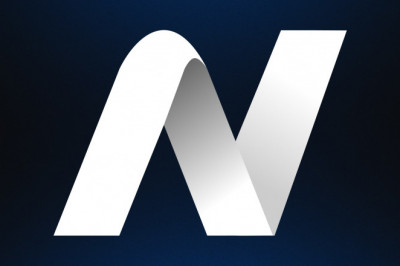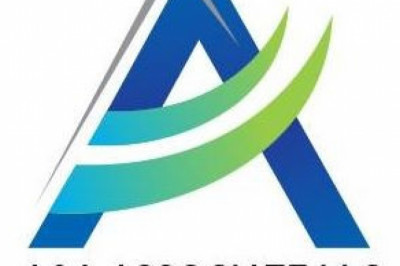views

Nonwovens market size is forecast to reach US$55.1 billion by 2026, after growing at a CAGR of 3.8% during 2021-2026. The development of the nonwoven market is endorsed to the rise in demand for nonwoven products and solutions for hygiene, medical, construction, and filtration applications. On the other hand, the nonwoven market is gaining high traction in certain areas like polylactic acid biodegradable fiber for its antibacterial and skin friendly nature use in medical industry, nonwoven floor covers for its flame retardancy and Liquid repellency, polyethylene nonwoven is a popular choice for outdoor furniture fabric and geotextiles applications. Nonwoven fabrics are sheet or web structures that are mechanically, thermally, or chemically bound together by entangling fiber or filaments (and by perforating films). Nonwovens provide extensive properties such as absorbency, liquid repellency, resilience, stretch, softness, strength, flame retardancy, washability, filtering, bacterial barriers, and sterility, owing to upsurge in its demand. Several regulations have been enforced for the production of and use of nonwovens in various end-use industries. For instance, the US Food and Drug Administration has approved the use of spunbond nonwovens in food packaging (FDA). Spunbond nonwovens have also been approved for use in medical and healthcare applications by the FDA and European regulators. Such regulations are accelerating the growth of the nonwovens industry during the forecast period.
Nonwovens Market COVID-19 Impact
The market witnessed a slight downturn of around in 2020 due to the impact of COVID-19, however, the market shall bounce back in 2021 on the back of strong consumer demand in hygiene, medical, personal care wipes end-user segments. The high demand for baby wipes, personal care wipes, and medical wipes has cushioned the market demand drop for the overall market. The nonwoven wipes segment emerged as the strongest demand application in 2020. The textile and nonwovens industry’s swift and far-reaching response to the Coronavirus pandemic made a huge impact this year as the world faced shortages of disposable masks, respirators, and other personal protective equipment. Many companies shifted gears and repurposed existing lines and product lines to make medical materials and face masks, while others invested in new production lines that came online fast due to shorter lead times.
Request for Sample Report @ https://www.industryarc.com/pdfdownload.php?id=19540
Report Price: $ 4500 (Single User License)
Nonwovens Market Segment Analysis – By Fiber Type
The staple fiber segment held the largest share of 66.9% by revenue in the nonwovens market in 2020 and is estimated to grow at a CAGR of 3.2% during 2021-2026. Fiber makers are responding to increased environmental awareness among end customers by marketing the environmental sustainability of their products such as biodegradable sources like cellulose, or recyclable options such as polyester. Polyester staple, in both virgin and recycled forms, now accounts for more than half (58%) of the man-made fibers and 36% of the overall staple fiber consumed by nonwovens. The majority of the virgin polyester staple fiber is used in the production of hydroentangled materials destined for the wipes industry, the vehicle sector (carpeting, trunk liners, and other noise, vibration, and harshness products) for heavier weight needle punch products made of recycled polyester fibers. Major single-use or disposable end markets for polyester staples are wipes, filtration, surgical packs, and gowns (mostly produced by dry-laid-hydroentangled technology). Important durable end markets include home & office furnishings, geosynthetics, interlinings, and transportation, all markets that are forecast to expand globally. Increased usage of this fiber is being noticed in applications like diapers, feminine hygiene products, and wipes as consumers become more aware of and scrutinize ingredients used in personal care products.
Nonwovens Market Segment Analysis – By Material
The polypropylene segment held the largest share in the nonwovens market in 2020 and is estimated to grow at a CAGR of 3.3% during 2021-2026. Polypropylene is the leading raw material globally used for manufacturing nonwoven fabrics and this is due mostly to the many different advantages and chemical properties it offers. PP nonwovens are Low cost and exhibit moderate strength and stability. They are also flexible and make it easier to mold into a variety of shapes. They are lightweight as well as Colorfast which means Colors will remain bright and can be colored without degrading the plastic quality. Furthermore, because of its excellent acid, alkali resistance, and less cost, it has been used widely as filter fabric. Especially in liquid filtration, needle punched, adhesive bonded, impregnated and calendered non-wovens are used. Polypropylene non-wovens are used in clothing, for example, anorks in bed covers and coverlets and furniture in padding. This padding improves heat insulation and offers greater comfort where important criteria are fatigue strength is of care.
Nonwovens Market Segment Analysis – By Application
The wipes segment held the largest share in the nonwovens market in 2020 and is estimated to grow at a CAGR of 5.8% during 2021-2026. Due to the coronavirus pandemic globally, the demand for disinfectant wipes of all types and categories witnessed a tremendous demand, that even the manufacturers could not produce enough supplies to match the demand. This generational event has catapulted the nonwoven wipes category into a recession-proof product category as the health and hygiene awareness among consumers has been altered forever. It is expected that even vaccines come out and the pandemic is over, the habits and behaviors of consumers will remain cautious and this augurs well for the demand and growth of nonwoven wipes. Disinfecting wipes have been supplied in record numbers during the pandemic, and demand for antibacterial wipes and healthcare wipes has also increased to unprecedented rates. This has increased the adoption rates in countries and geographies where such sales demand was not seen earlier.
Nonwovens Market Segment Analysis – By Geography
Asia-Pacific held the largest share in the nonwovens market in 2020 up to 35% by revenue. Major growing industries in Asia-Pacific include manufacturing, food and agriculture, medical and pharmaceuticals, mining, power, and Energy. With the growth of these industries, the market for nonwovens is expected to grow further in the region. The medical textiles include a vast range of applications, viz. adhesive tape, bandages, blankets, diapers, dressings, eye pads, gauzes, protective clothing, sutures, surgical covers, surgical clothing’s, sanitary products, hospital gowns, face masks, and others. According to the Australian Institute of Health and Welfare, in the 2017–18 financial year, Australia spent an estimated $185.4 billion on health. In real terms, this represented a 1.2% growth in spending from the previous year equating to an additional $2.2 billion. The main areas in which spending increased included Hospitals (increased by $3.2 billion), Primary health care (increased by $1.5 billion), Referred medical services (increased by $0.8 billion). An increase in the use of spun-bond nonwovens for health purposes leverages a positive impact on the market growth. Also, garnering direct attention from the Indian government, a National Technical Textiles Mission has been set up that aims at an average growth rate of 15-20% to increase the domestic market size of technical textiles to US$ 40-50 billion by the year 2024; through market development, market promotion, international technical collaborations, investment promotions and Make in India initiative. Such government initiatives are also set to accelerate the growth of the nonwovens market in the Asia-Pacific region.
Nonwovens Market Drivers
Growing Demand of Spundbonded Polyester Nonwoven Across Different Applications
Spunbonded polyester nonwoven is finding lot number of applications in filtration, automotive, construction, agriculture, landscape system, leather goods, and so on. Spunbonded polyester nonwoven is also the best printing media, so due to this, the manufacture uses this nonwoven product to manufacture shopping bags, garbage bags, storage bags, products packaging bags. Outdoor billboards, street banners, calendar printing, various kinds of tents, table-cover, curtain, envelop, gift bag, book cover, wall covering, and so on. In addition, polyester spunbond nonwoven fabric to be widely used as various kinds of packaging materials. Such as desiccant packaging of silica-gel drier, carbon absorbents, and more. Polyester spunbond nonwoven fabric which has very good strength, excellent air permeability absorbs moisture. Also, because it is anti-tear and anti-pull. It is perfectly protecting inside the material. Spundbonded polyester nonwoven also finds several applications in medical, and agriculture, products. The growing demand for spun-bonded polyester nonwoven applications across various industries tends to increase the growth of the market.
Growing Geotextiles Demand for New Applications
According to European Disposables and Nonwovens Association (EDANA), around 750 sq. km of nonwoven geotextiles are manufactured and sold every year, 60% of which are used in the construction of roads. There is an increasing demand for nonwoven geotextiles over geocells and geogrids for constructing roads, pavements, buildings, and dams as it has more absorption capacity. According to the Ministry of Textiles, in 2019, India had 40 geotextiles projects for roads, water reservoirs, and slope stabilization. Apart from construction, geotextile is now gaining popularity in other applications such as mining, oil drilling sites, shale gas, and others. The usage of geotextile tubes is steadily increasing on the marine coast, as these are used for preventing the coastal erosion that occurred due to the rise in the level of the oceans and seas because of the increasing temperature. For instance, the government has installed geotextile tubes along with the Bay of Bengal coastline, the coastal areas of Malad, Mumbai, along the Uppada Sea Wall, Andhra Pradesh, and in other coastal areas in India. Geotextiles can prevent adjacent soil layers or fill materials from intermixing. In infiltration applications, nonwoven geotextiles are used to retain soil particles while allowing the passage of liquids through the filter media. These benefits of geotextile are encouraging the players to develop geotextile systems for particular applications. For instance, in October 2015, Husker had launched the SoilTain Protect geotextile system for the international mining community. Several institutes, organizations, and associations are collaborating with the companies for the installation of the geotextile tubes. For instance, in September 2017, the National Agricultural Research and Extension Institute (NAREI) had signed a $13.8M contract with Samaroo Investment for the installation of geotextiles tubes. The contract includes the installation of the 100m geotextiles tubes to form groins along the foreshore at Reliance, Essequibo. The demand for nonwoven geotextiles for these applications is expected to increase at a faster rate in the coming years, which will further provide Spunbonded Polyester Nonwoven Market with various opportunities.
Inquiry Before Buying @ https://www.industryarc.com/reports/request-quote?id=19540
Nonwovens Market Challenges
Sustainability and EPR Challenges from EU
In January 2018, the European Commission adopted the world’s first comprehensive Plastics Strategy. In May, the commission released “The Single-Use Plastics: New Measures to Reduce Marine Litter” report, which proposed new rules to reduce the 10 most found plastic waste items on Europe’s beaches that account for 43% of total marine litter. This includes wet wipes and sanitary items, which is a key product segment in the nonwovens market sales. These products are made using a mixture of cellulose and polyester (PET) or polypropylene (PP) and are produced mostly using carding and hydroentangling methods. While there are new methods that can help produce such products to comply with EU rulings it can be a capital-intensive solution for the majority of manufacturers globally. For example, a major innovation was offered by Austria-based Andritz AG. The high-performance Wetlace™ process for flushable, dispersible, and biodegradable wipes was showcased back in 2015. Similarly, Germany-based Trützschler Nonwovens GmbH, in collaboration with The Voith Group, Germany, offers solutions that can replace existing fossil-based polymeric fiber products with cellulose and other bio-based polymers such as polylactic acid (PLA) to overcome the EU ban.
The Rise in Raw Material Price
The process of creating polyester fiber begins with reacting ethylene glycol with dimethyl terephthalate at high heat. This reaction results in a monomer, which is then reacted with dimethyl terephthalate again to create a polymer. Majorly, the price of crude oil is increasing drastically, and due to this, the production of polyester tends to be expensive as compare to other raw materials, which constraints the growth of the market. In Addition, due to environmental regulation, the production of man-made raw materials is getting reduced and the demand for its alternative, which is natural fibers, is getting increased. This factor is also tending to constraints the growth of the market and can be seen in its effect in the futuristic market period.
Nonwovens Market Landscape
Technology launches, acquisitions, and R&D activities are key strategies adopted by players in the nonwovens market. Major players in the nonwovens market are Freundenberg Group, Johns Manville, Shandong Taipeng Environmental Protection Material Co. Ltd., Avintiv Inc., Kavlon Filter Products Co., Unitika Ltd., Kolon Industries Ltd., Toyobo Co. Ltd., Toray Industries Inc., and Ahlstrom-Munksjo Oyj.
Acquisitions/Technology Launches
In May 2020, The Johns Manville plant in South Carolina, started production, to make nonwoven fabric that was used for manufacturing urgently needed disposable medical gowns used in the fight against the spread of COVID-19. The new polyester spunbond nonwoven was designed for the production of Level 3 medical gowns.
Key Takeaways
Asia-Pacific dominates the nonwovens market. Increased demand for medical and adult incontinence products in the region has stemmed from the region's aging population and increased prevalence of chronic diseases, which is expected to boost the market growth.
Nonwovens are extensively used in medical and healthcare applications to provide decent protection against biological agents. They are gradually replacing traditional materials in the healthcare sector, which is also positively affecting the market growth.
However, frequent price fluctuation of raw materials such as polyester and polypropylene may hamper the growth of the nonwoven market.
Related Reports
A.Nonwoven Fabric Market
https://www.industryarc.com/Research/Nonwoven-Fabric-Market-Research-502918
B.Spunbonded Polyester Nonwoven Market
https://www.industryarc.com/Report/19408/spunbonded-polyester-nonwoven-market.html
For more Chemicals and Materials Market reports, please click here
About IndustryARC Chemicals and Materials
Chemical Industry Market Research
More about IndustryARC Chemicals and Materials
Contact info
Venkat Reddy Sales Director Email: venkat@industryarc.com Website: https://www.industryarc.com Phone: (+1) 970-236-3677












